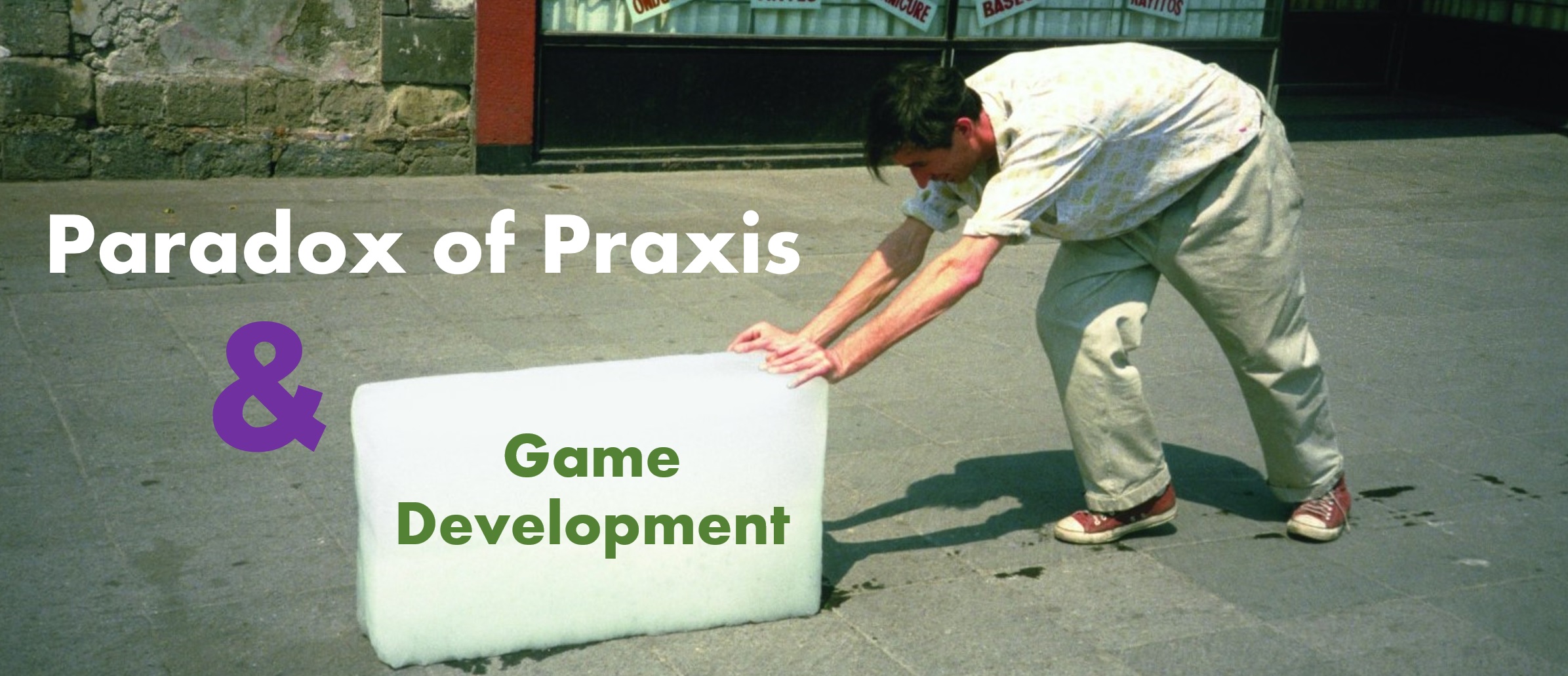
Avoiding the Paradox of Praxis in Product Development: Lessons from Art and Game Monetization
One of my favorite pastimes is exploring artwork and reading art descriptions. Art transcends verbal communication, expressing ideas that words often cannot capture. Recently, I stumbled upon an unconventional piece by artist Francis Alÿs that illustrated this beautifully. In 1997, Alÿs pushed a block of ice through the streets of Mexico City until it completely melted. Titled Paradox of Praxis, this performance was carried out under the theme, “sometimes making something leads to nothing.”
After nine hours of pushing a 60-cubic-foot ice block, it melted to the size of an ice cube, and eventually, just a drop of water. The action, which initially seemed purposeful, left nothing tangible behind—just a trail of water drops that quickly evaporated.
This performance got me thinking about game monetization, product development, and even life in general. So often, we spend time and energy pushing, creating, and developing, only to end up with seemingly little to show for our efforts. In product development, it’s easy to work hard on a feature or service only to find it hasn’t moved the needle or impacted users as expected. It’s the “Paradox of Praxis” in action: spending time and resources on efforts that lead to no measurable results.
To help avoid this scenario in product development, here are four key strategies to ensure your efforts create lasting impact rather than fading away like water droplets in the sun.
Contents
1. Understand the Nature of Your Solution
Before diving into product development, it’s essential to thoroughly understand the problem you’re trying to solve. Many developers make the mistake of focusing on features without fully understanding how these will serve their users or achieve business goals. Just as Alÿs’s ice block dwindled despite his efforts, a product or feature can lose relevance if it’s not rooted in a genuine solution for the target audience.
Take the time to ask, “Why does this solution matter?” and “How does it improve the user experience?” Map out user pain points and look for opportunities to create value. This foundation will give you a clearer vision and help you avoid wasting time on solutions that don’t address real needs. By focusing on the true nature of the solution, you’re more likely to build features that resonate and leave a lasting impact.
Actionable Tips:
- Conduct user interviews or surveys to understand their needs and challenges.
- Analyze competitors to see how their solutions work and where there are gaps.
- Develop a clear product mission that guides every new feature and release.
2. Measure Impact in Small Increments
Alÿs’s journey with the ice block was long, and its progress could only be measured by the slow shrinking of the block. In product development, tracking progress over time can also help ensure that each step has value. Rather than waiting until the end of a long project to measure success, track impact in smaller increments.
Use analytics to measure how users are interacting with new features and adjust based on feedback. Small, incremental improvements allow you to course-correct if necessary and refine features before they’re fully scaled. This approach helps ensure each step contributes to the overall impact, rather than reaching the end only to find the effort didn’t achieve the desired results.
Actionable Tips:
- Set specific goals for each feature or release, such as user engagement or retention metrics.
- Run A/B tests to assess feature impact and adjust based on results.
- Use agile methods to iterate quickly, allowing you to pivot or refine based on early feedback.
3. Seek Advice from Those with Similar Experience
Alÿs may have approached his performance differently if he’d consulted someone who had undertaken similar endurance-based art. In product development, seeking advice from others who have faced similar challenges can provide valuable insights and prevent wasted effort. Learning from others’ experiences can help you avoid pitfalls, prioritize effectively, and focus on strategies that are more likely to yield positive results.
This advice doesn’t just apply to technical features. Learning from monetization models in the gaming industry, for example, can offer lessons on which strategies boost engagement or retention. Engaging with mentors, industry leaders, or even direct competitors can provide fresh perspectives and refine your approach.
Actionable Tips:
- Join product development communities or forums to connect with experienced professionals.
- Attend webinars, workshops, or conferences to learn about current trends and successful strategies.
- Regularly analyze case studies in your industry to see what has and hasn’t worked for others.
4. Avoid Fixating on the Solution Itself
A common mistake in product development is to fixate on a particular feature or solution simply because it’s innovative or exciting. However, fixating on the solution rather than the problem can lead to wasted effort and disappointment. In the case of Alÿs’s ice block, pushing it until it melted may have seemed meaningful, but ultimately, the action led to nothing concrete.
Instead, stay adaptable and be willing to let go of ideas that aren’t working, even if they initially seemed promising. Focus on how each feature or solution contributes to the larger goals. If a specific feature isn’t adding value, don’t be afraid to pivot or abandon it altogether.
Actionable Tips:
- Regularly reassess how each feature aligns with your business objectives.
- Encourage team feedback to identify when a feature is no longer serving its purpose.
- Stay user-focused: if users aren’t responding well, be open to revisiting or scrapping the feature.
The “Paradox of Praxis” in Big Companies
The experience of putting in effort with little to show for it is more common in large companies, where group dynamics and bureaucratic processes can slow progress. In smaller organizations, teams often have a clearer sense of purpose and the flexibility to adapt quickly. Analyzing the impact of company size and structure on product development could be a topic for a future discussion. For now, remember that large or small, all organizations benefit from focusing on actionable, impactful product development strategies.
Final Thoughts: Apply the Lessons from Art to Product Development
Just as Francis Alÿs’s performance art illustrated, effort alone doesn’t guarantee tangible results. In product development, it’s not enough to push forward without a clear plan or understanding. By defining the nature of your solution, measuring incremental impact, seeking advice, and avoiding fixation on any single solution, you can build products that create lasting value.
Avoid the “Paradox of Praxis” in your own projects by staying adaptable, user-focused, and willing to pivot. Whether you’re developing features for game monetization, enhancing engagement, or creating new content, these strategies will help ensure your efforts lead to measurable success.
About AppLixir: AppLixir is a leading provider of rewarded video ads for games and content sites. Our solutions help developers maximize revenue and engagement with a seamless, user-friendly experience. Contact us at info@blog.applixir.com for more information.


